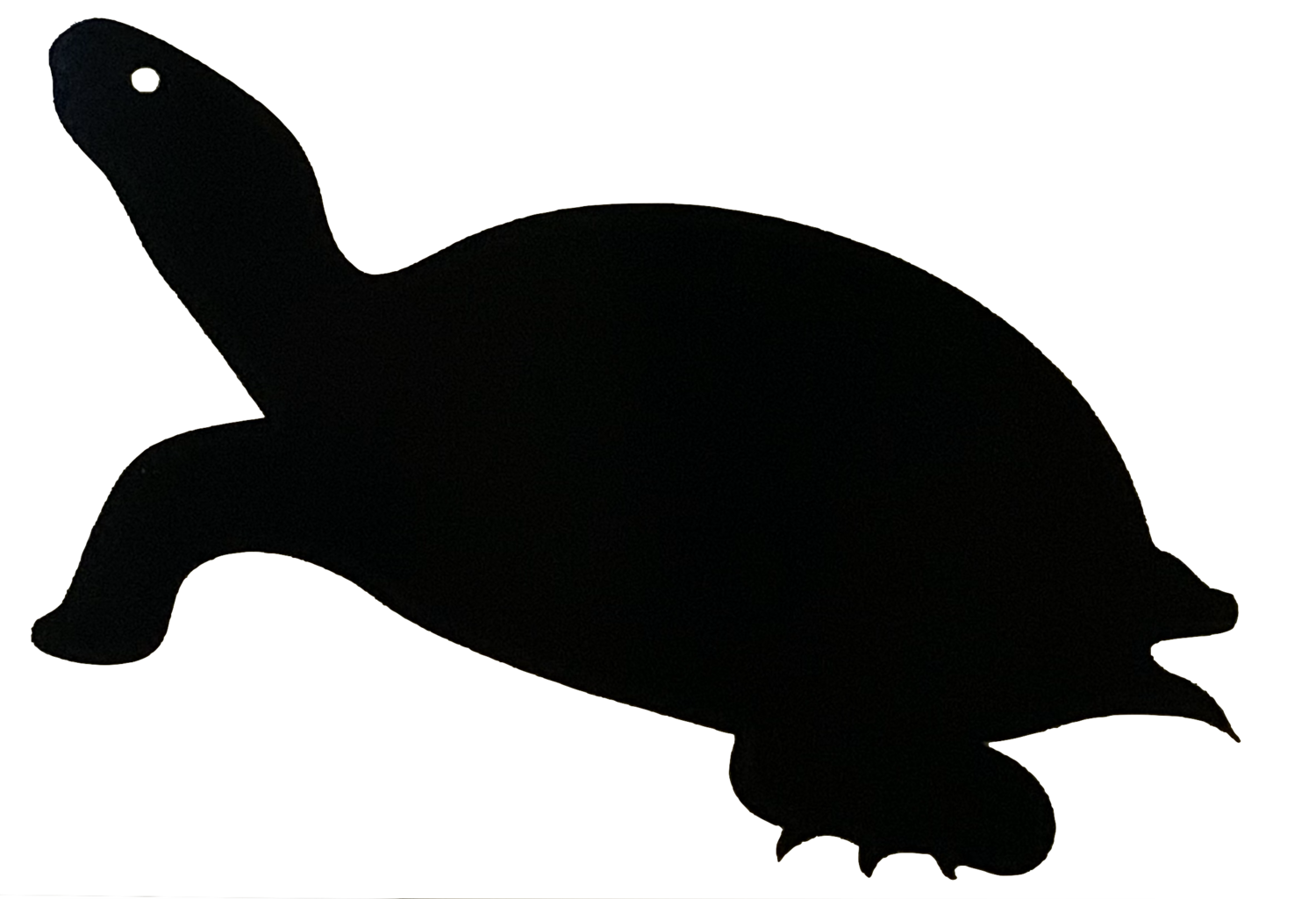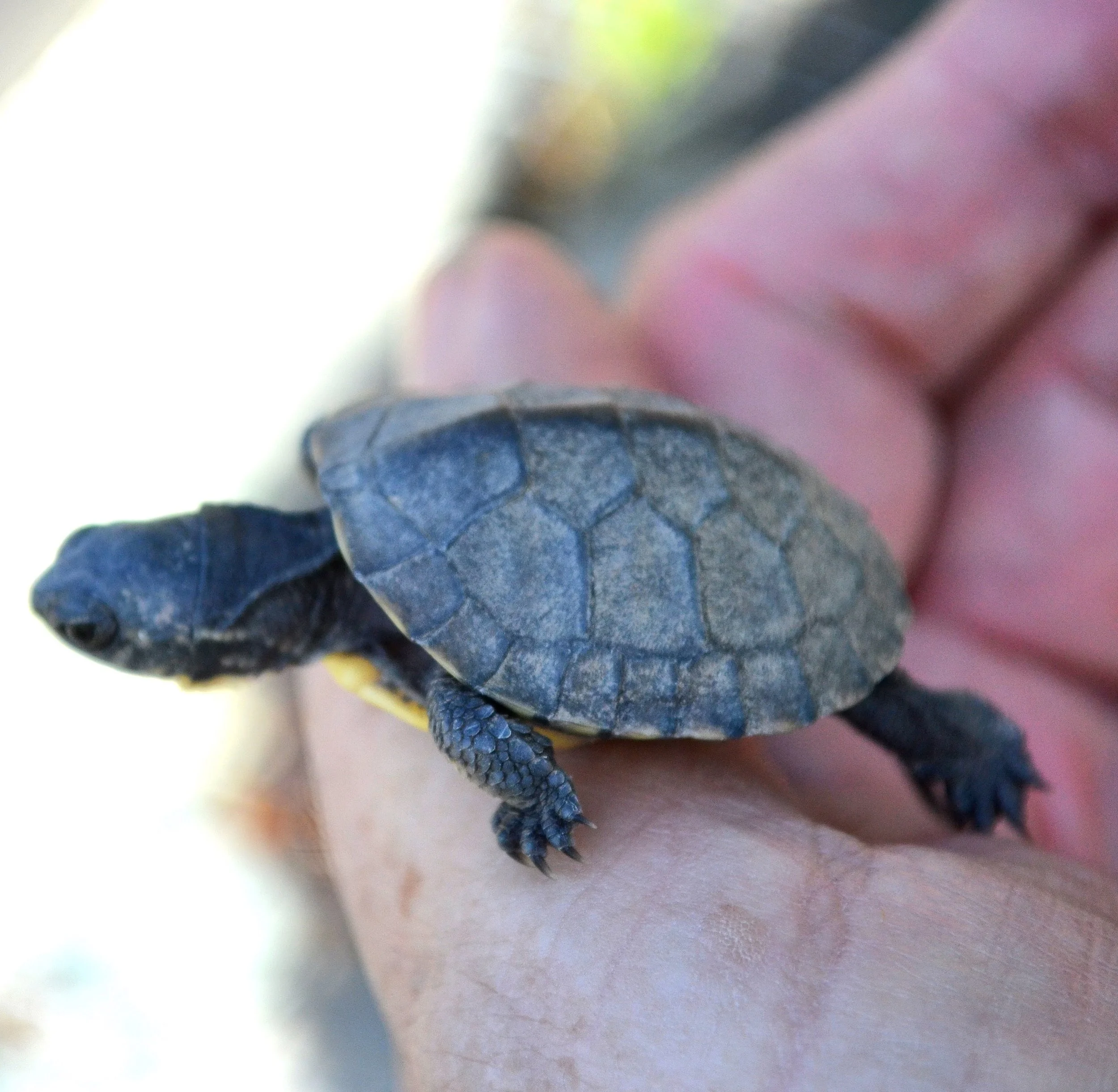What is headstarting and why is it useful?
Our Ontario turtles are all species at risk meaning their populations are declining and they are at risk of becoming extinct. As such, there are many organizations and individuals trying to make a difference to help these beautiful species!
When it comes to conservation efforts to help turtle populations, there are many things we can do: habitat protection, exclusion fencing along roads, nest protection, injured turtle rehabilitation, and egg incubation to name a few.
When we start talking egg incubation this conversation often logically flows into headstarting turtles. Headstarting is the process of incubating and then raising turtle hatchlings for some period of time before releasing them back into the wild. The thought behind headstarting has a little bit to do with the bigger the better. If we are able to get these turtles bigger, older, and past some of the typical mortality challenges they face as vulnerable little hatchlings, then maybe they will be more likely to survive to sexual maturity than wild hatchlings.
0 year old hatchling Blanding’s turtle - notice the size comparison with the headstarted Blanding’s turtle
~1 year old headstarted Blanding’s turtle - notice the size comparison with the wild Blanding’s turtle hatchling
Exactly how headstarting programs get their turtle eggs (from nests they extract under permits or perhaps injured / dead turtles brought into rehabilitation centres) to how long they keep the hatchlings (anywhere from a couple weeks to a couple years) in the headstart program will vary from program to program. There are even questions about if headstarting programs are worth the effort as it is expensive, requires a lot of time and resources, and permits.
A study by Mullin et al. 2022 on headstarting wood turtles in Ontario confirmed that these headstarting programs do make a difference by increasing recruitment but that there are no additional advantages to keeping a hatchling in a headstarting program more than 1 year.
Of course as mentioned by Wijewardena et al. 2023, more research and longer studies are needed to understand if successful headstarting programs, that result in higher survival rates of hatchlings, actually lead to successfully reproducing adult turtles.
Wijewardena et al. 2023, looked at the success of their Blanding’s turtle headstarting program in Rouge National Urban Park in Ontario. They tracked individuals from cohorts of headstarted hatchings released from 2014-2019 for at least one year each and found that their hatchlings had a survival rate approaching 89%. Again, showing that, at the very least, headstarting can help boost hatchling turtle survival for some time.
The Blanding’s turtle headstarting efforts at Rouge National Urban Park continue at the Toronto Zoo and has, as of December 2024, released 743 Blanding’s turtles (490 of which were 2 year old headstarted turtles and the rest hatchlings), helping to boost the population within the park which was “deemed functionally extinct” with just 6 adults in 2012.
The Ontario Turtle Conservation Centre (OTCC) in Peterborough also does some headstarting and a lot of egg incubation! In a given year they collect 3000-5000 turtle eggs from injured turtles and have a 65% hatching success rate following incubation. A study by the OTCC (Carstairs et al. 2019) wanted to better understand if their headstarted turtles could successfully brumate over winter and survive to maturity and reproduce. Although these headstarted turtles are not sexually mature yet, the OTCC found that, after 1-2 years in the wild, headstarted Blanding’s turtles had similar growth, movements within their habitat and survival to wild-hatchling juveniles.
Blanding’s turtles hatchling from eggs incubated by the Canadian Wildlife Federation (CWF) under permits. Thanks to the CWF for sharing this photo.
There was a 1-2 year acclamation period after being released where the OTCC found that headstarted turtles behaved differently than wild turtles. This was attributed to a ‘hard release’ of the turtles directly from the comforts of their headstarting program to the wild; suggesting a transition and pre-release period in an outdoor enclosure could help decrease the acclamation period.
So, what does all this mean?
These studies help us know that headstarting programs, that incubate and then keep hatchlings for some period, can result in higher hatchling survival rates, potentially leading to positive turtle population impacts. It reminds us that any small action we can take can make a difference and that all our small actions together can make a big change!
REMEMBER: it is illegal to dig up or alter a turtle nest with out appropriate training and permits.
REMEMBER: it is illegal to confine for any reason a turtle without appropriate knowledge and permits.
References:
Carstairs, S., Paterson, J.E., Jager, K.L., Gasbarrini, D., Mui, A., Davy, C.. 2019. Population reinforcement accelerates subadult recruitment rates in an endangered freshwater turtle. https://ontarioturtle.ca/wp-content/uploads/2019/03/Headstarting-Draft-2019.pdf
Mullin, D.I., White, R.C., Mullen J.L., Lentini, A.M., Brooks, R.J., Litzgus, J.D.. 2023. Headstarting turtles to larger body sizes for multiple years increases survivorship but with diminishing returns. J. Wildl Manag. 87(4):e22390. DOI: 10.1002/jwmg.22390
Wijewardena, T., Keevil, M.G., Mandrak, N.E., Lentini, A.M., Litzgus, J.D.. 2023. Evaluation of headstarting as a conservation tool to recover Blanding’s Turtles (Emydoidea blandingii) in a highly fragmented urban landscape. PLoS ONE. 18(3):e0279833. https://doi.org/10.1371/journal.pone.0279833



